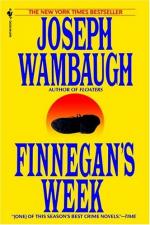|
This section contains 355 words (approx. 2 pages at 300 words per page) |

|
Wambaugh was an unprecedented phenomenon. Many American writers have focussed upon crime in the big American cities, and many of these — such as Stephen Crane and Theodore Dreiser — have been journalists who really knew the ugliness of the crimes and the cities. But Wambaugh is the first policeman to successfully portray the policeman's intimate view of the ugliness. His success spawned a whole subgenre of books, films, and television shows — written mostly by noncops — which adopt the gritty cop'seye view of the city. But Wambaugh was the originator.
A pair of peculiar precedents or, more exactly, contemporaries might be mentioned. Wambaugh is one of three Irish-American authors who began to write naturalistic best-selling fiction about crime in American cities in the 1970s. The first was George V. Higgins, whose The Friends of Eddie Coyle appeared in 1972, two years before The New Centurions...
|
This section contains 355 words (approx. 2 pages at 300 words per page) |

|




